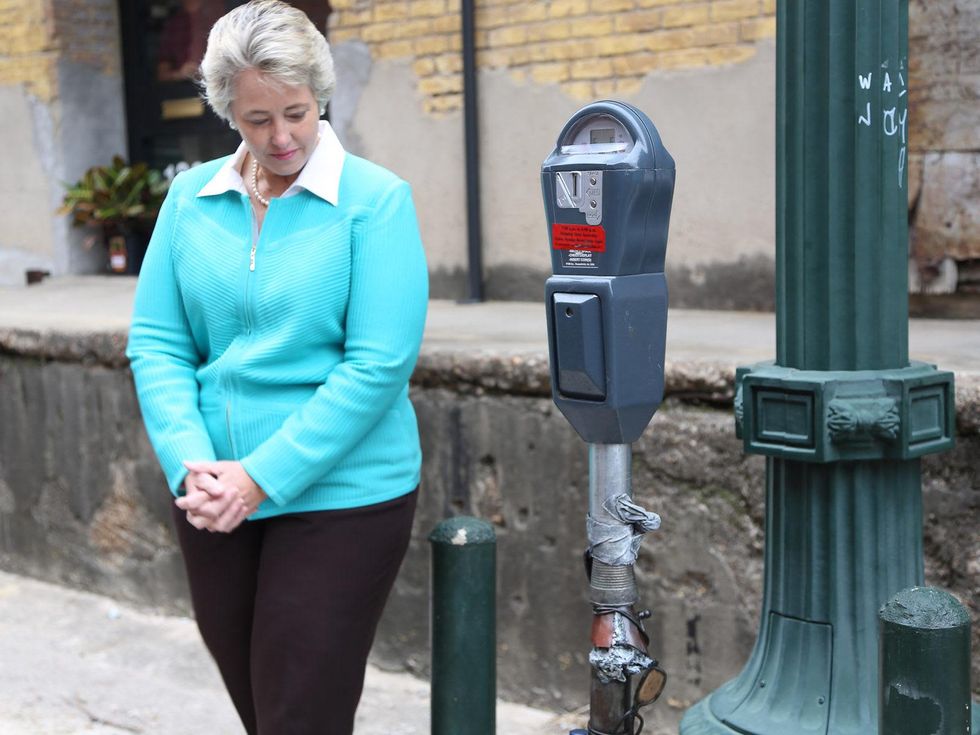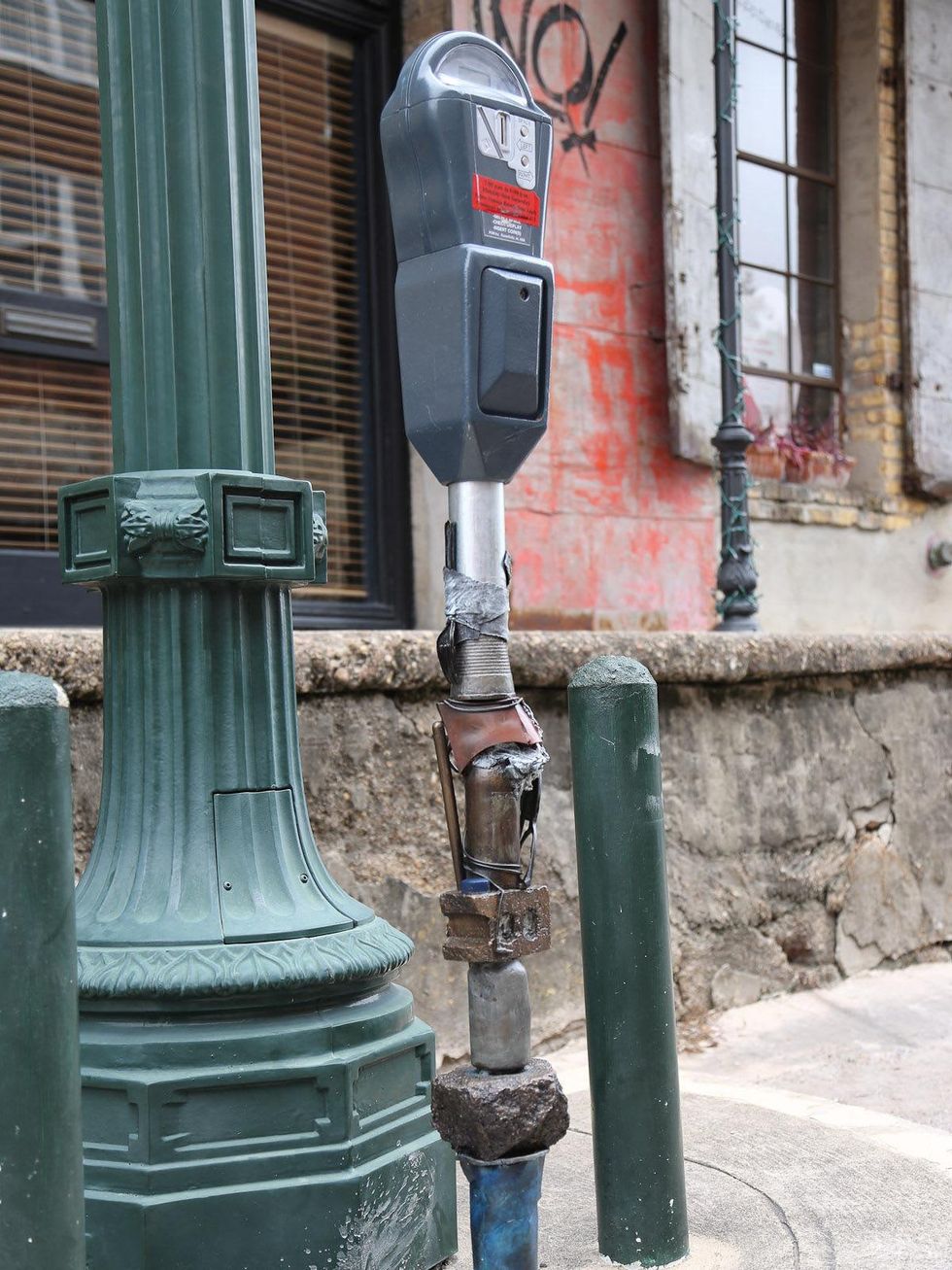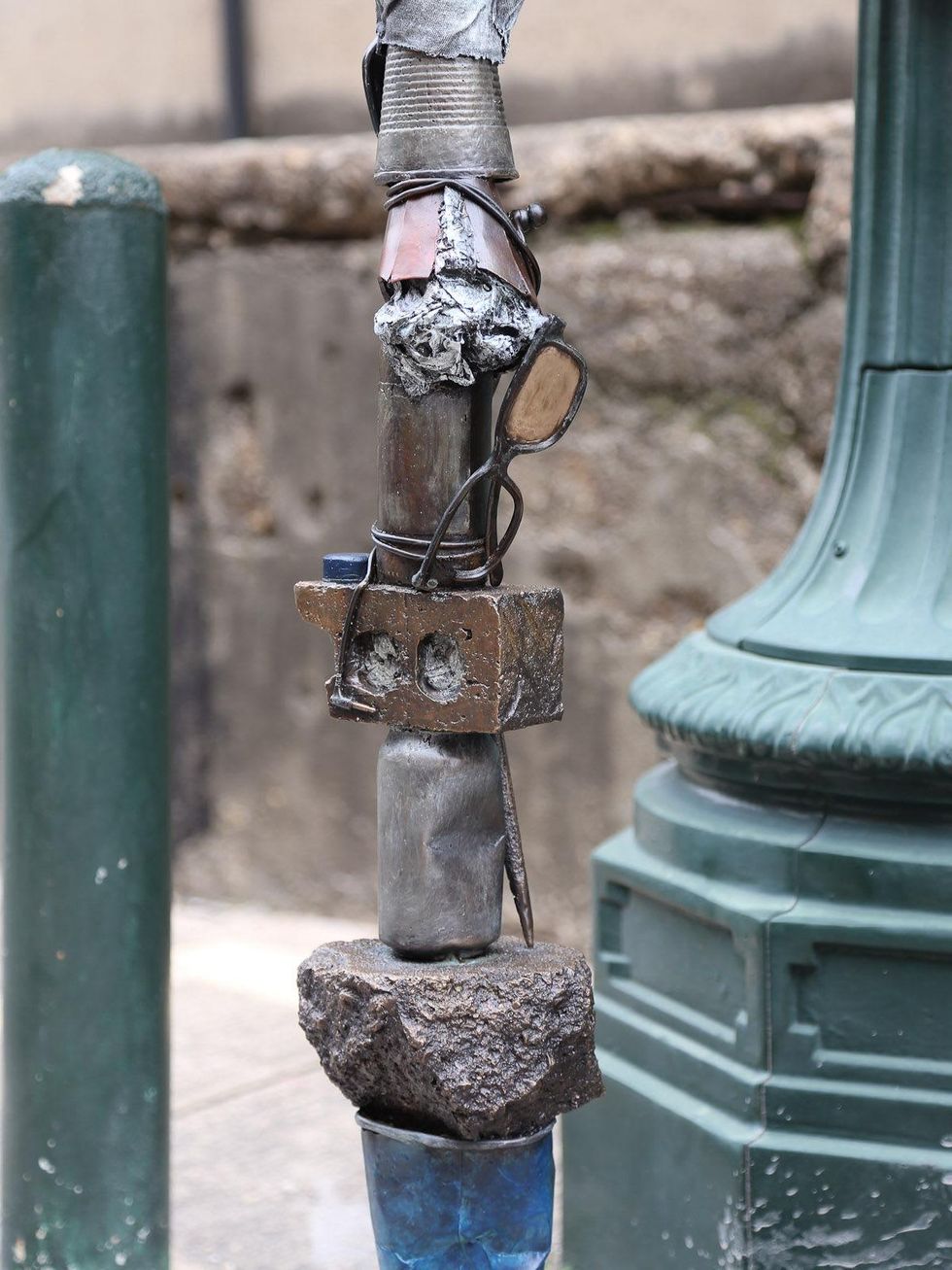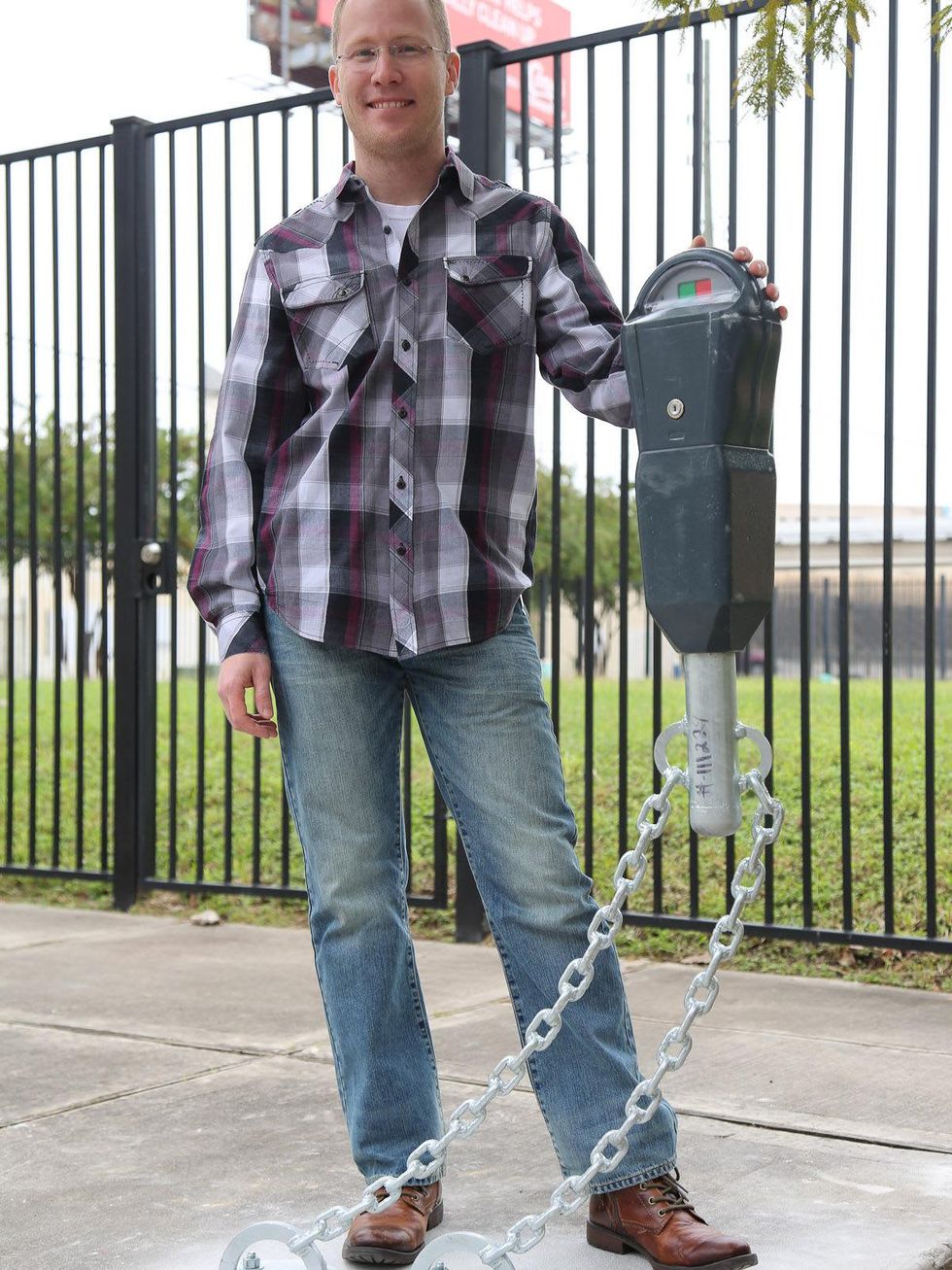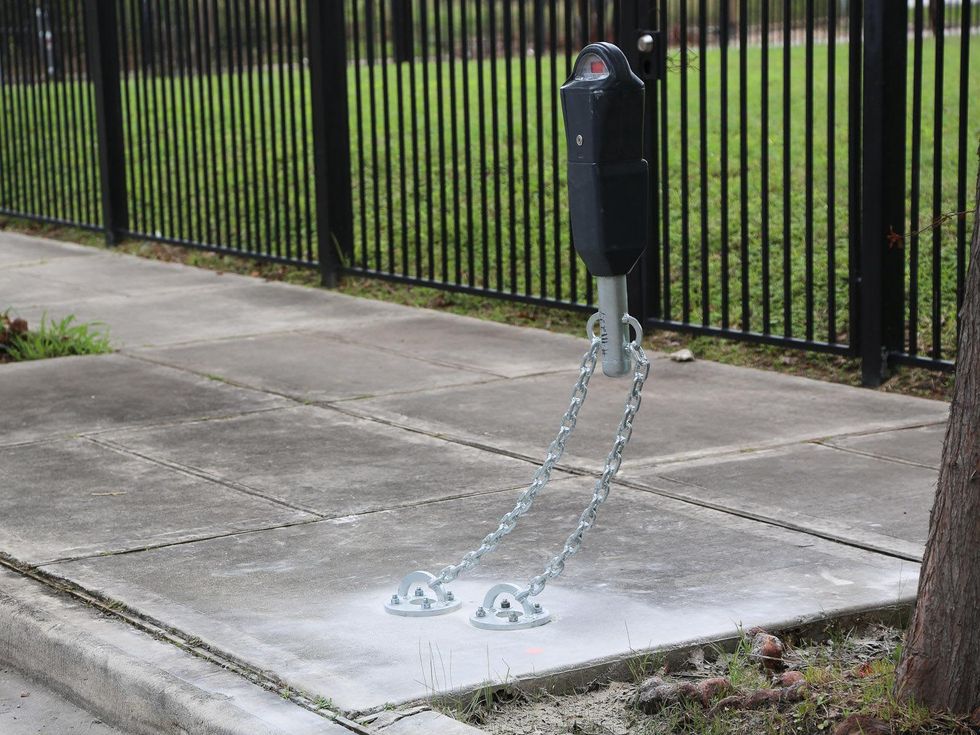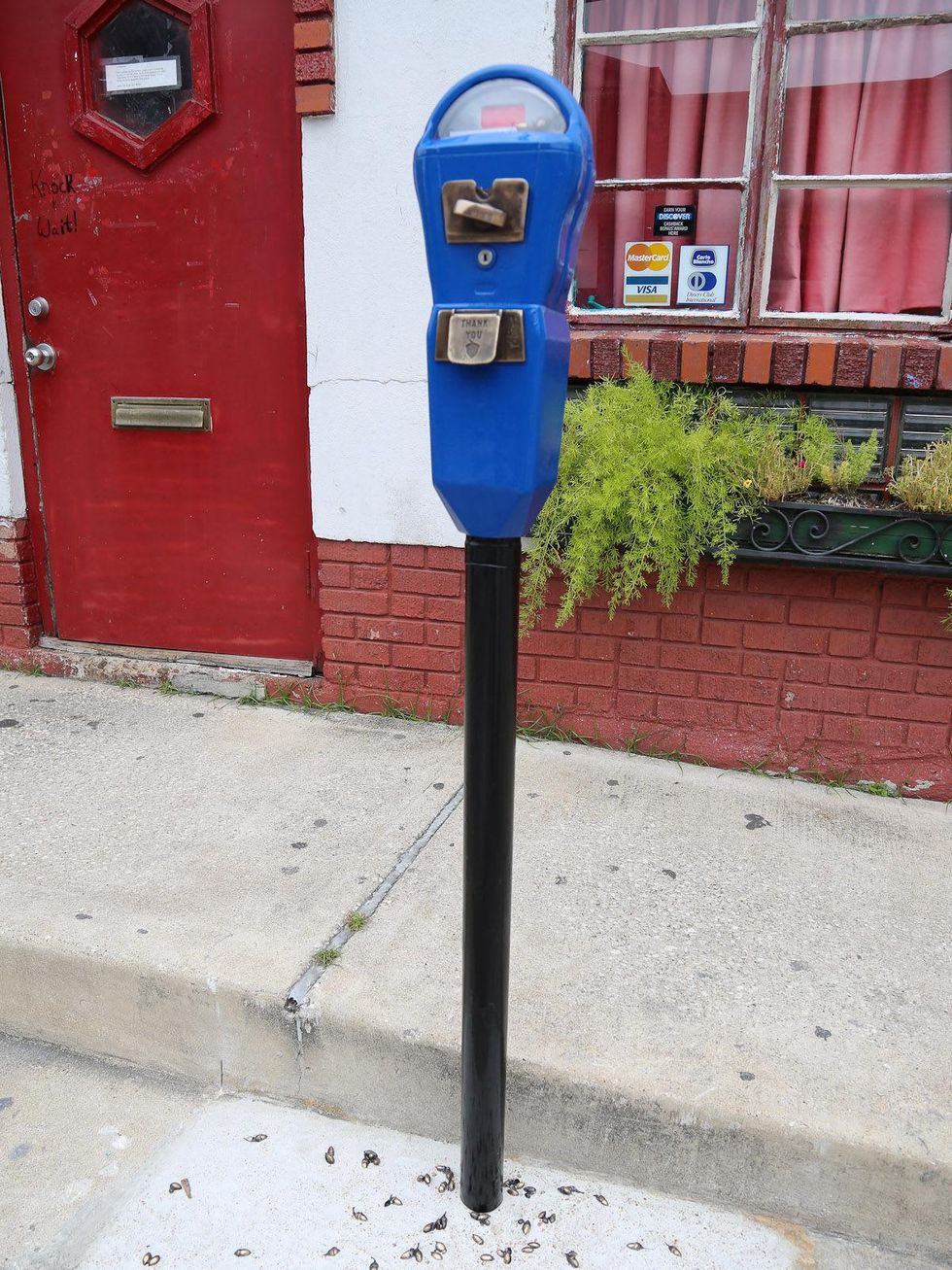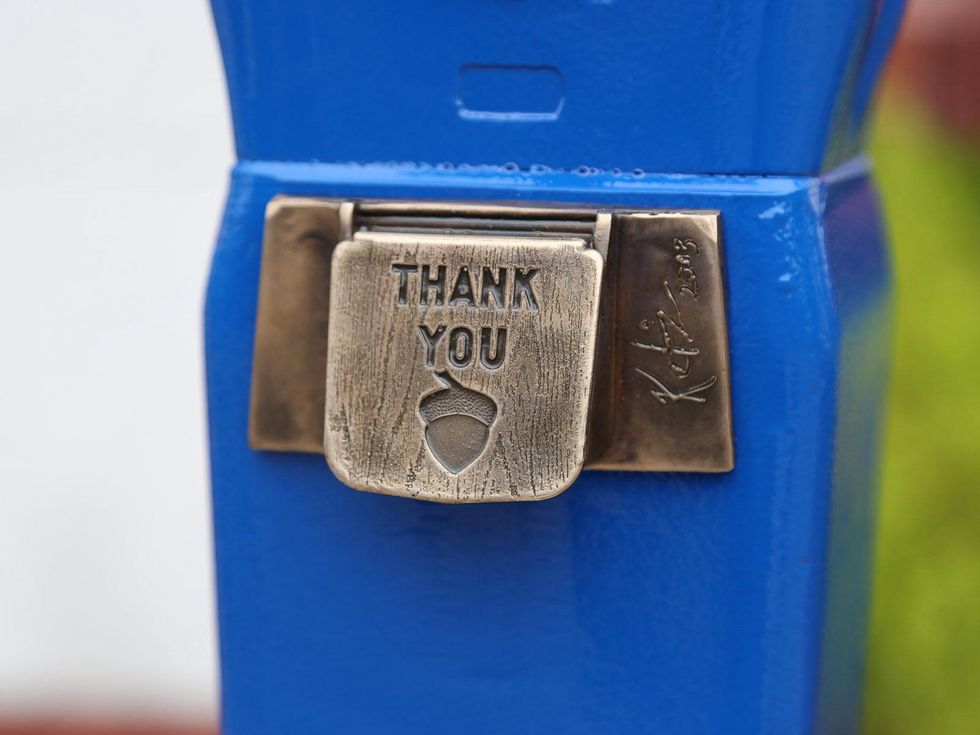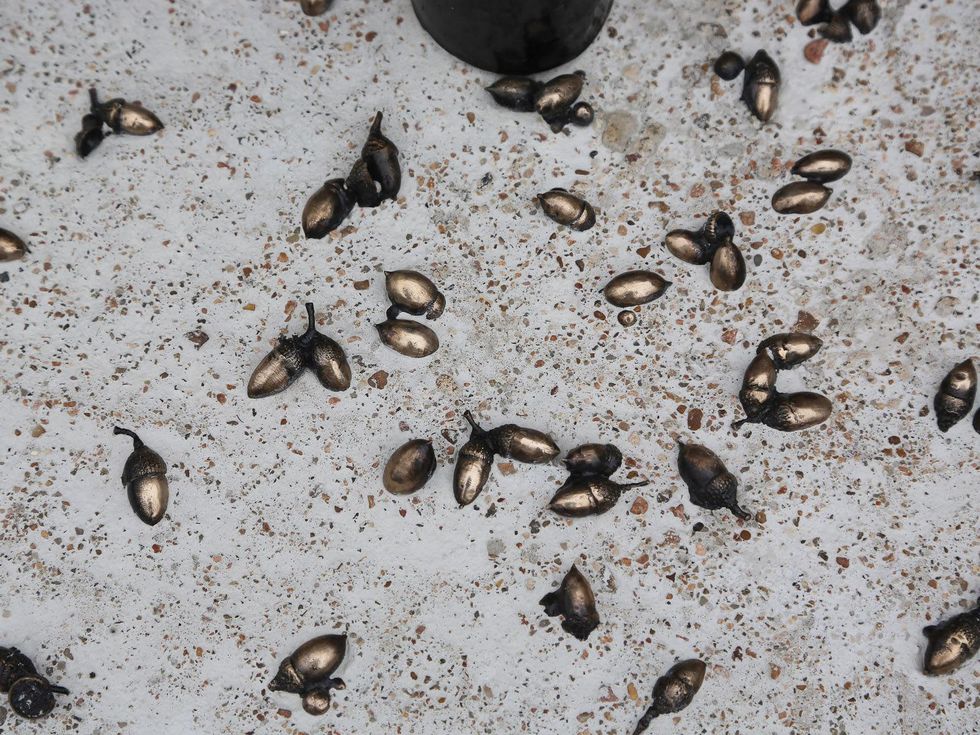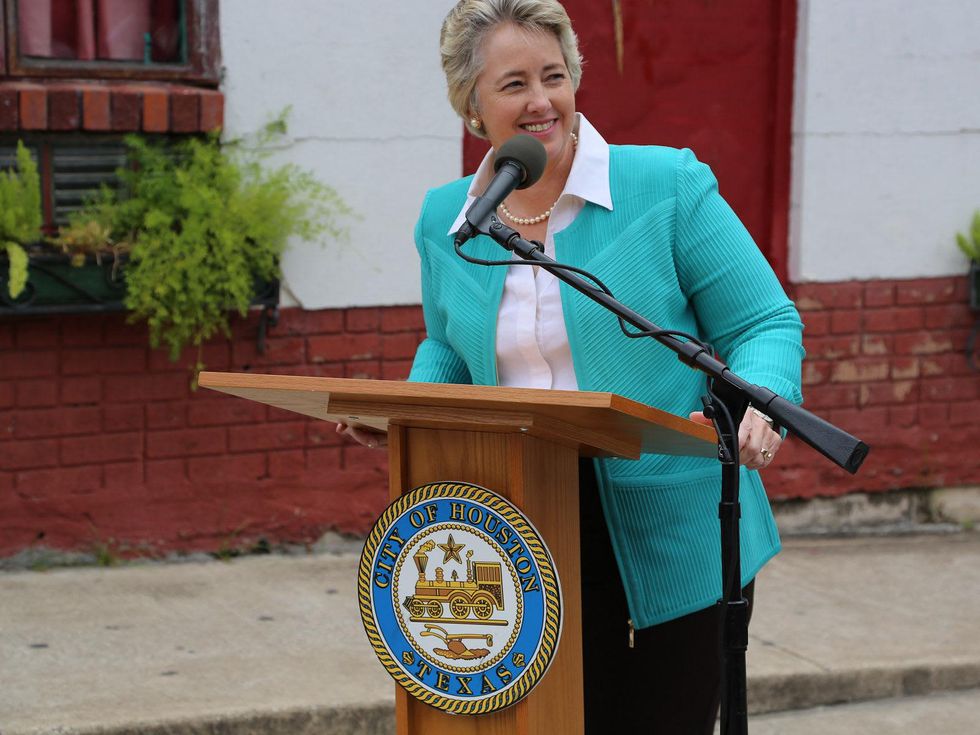Unexpected fun
New parking art adds fun to a colorful neighborhood — just remember to feed the meter
As foundry smith Ketria Scott contemplated her newly installed playful sculpture located in front of Last Concert Café on Nance Street, from within a group of onlookers someone remarked that she had combined two things that Houstonians go nuts over: Parking and art.
Scott's Gumball Machine doesn't dispense acorns as the bronze engraving on the sculpture may suggest. Rather, her art parking meter's purpose is to tell a frisky tale that awakens a viewer's sense of fantasy.
Mayor Annise Parker introduced this and three other public art installations in Houston's Warehouse District during a press conference Tuesday. The project, a collaboration between the Houston Arts Alliance and the City of Houston Parking Management, is said to comprise the country's first art parking meter sculptures, ones that aren't solely painted for attention but instead are conceived as art pieces from their inception.
"This doesn't have to be high concept art," Parker says. "If people stop and say, 'That's really cool,' and that's all that happens — it's done its job."
Located at 1300 Sterrett St., Found Art, designed by David Medina, recycles objects such as eye glasses, plastic cups, headphones, broken pieces of concrete, cans, pens and electrical miscellanea in a hodgepodge construction that breathes new life into discarded items. Anthony Shumate's Wind Blown Meters at 1200 Sterrett St. is a series of three galvanized sculptures, each rendering a trompe-l'œil in which the head of the object appears suspended in midair, hovering as if swayed by the wind of cars zooming by. Car & Meter History by Devon Moore at 1300 Nance St. is currently being completed.
"Visitors will know they are parking meters. We don't want to surprise anyone with a parking ticket."
"As the first parking meter project in the nation to employ sculptural elements to design, it exemplifies two important elements in public art: Permanence and distinction," Jonathon Glus, CEO Houston Arts Alliance, says in a statement.
The materials for the art were selected to withstand the elements and wear and tear.
The art parking meters are part of a larger overhaul of parking downtown that includes streamlined signage, maximizing curb space and the use of centrally located electronic meters that dispense printed tickets — an effort that simplifies how parking rules are communicated to drivers. But in certain locations where traditional coin parking meters are needed, sculptures can add a fun, funky element of surprise, Parker adds.
"Visitors will know they are parking meters," Parker jokes. "We don't want to surprise anyone with a parking ticket."
The sculptures are a pilot program that could be replicated in other Houston neighborhoods. In areas where space doesn't allow for large-scale public art installations, art parking meters are a high-quality, low-budget alternative that can beautify city streets. This inaugural collection of four sculptures was commissioned for $5,000 per piece.
As for the addition of parking meters of any kind in the Warehouse District, city officials hope that the meters solve the parking conundrum that has the neighborhood's narrow streets looking like a chaotic cluster of clunkers. The small quarter has been a popular, free parking area for Harris County, Metro and University of Houston students, which often left tenants, their guests and clients without daytime parking.
When parking enforcement begins on Dec. 1, special permits for tenants and business owners should clear the way for easier access into their premises.
